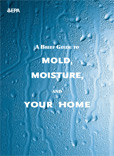
How to Protect your Home from Mold Damage
Mold is destructive to valuable property. The damage resulting from mold isn’t typically covered by standard homeowner’s policies. It is important to learn how to combat mold.
Mold grows on any surface
Mold can grow inside or outside your home. In permanently damp conditions, it grows and spreads rapidly, all year-round. Mold is favored by places with high humidity levels, including kitchens, ceilings, basements and leaky walls in bathrooms.
Your homeowner’s insurance policy won’t cover mold damage
Mold is a maintenance issue that is not covered under standard insurance. In cases where mold has resulted from a covered risk, the cost of removing the mold may be covered.
Whether you have mold damage insurance coverage or not, here are some practices that you should adopt to keep mold growth at bay.
How to prevent mold growth
Most basic methods of preventing mold growth revolve around reducing the amount of moisture in your environment.
Mold prevention DOs
- Use dehumidifiers or air conditioners to ensure that the humidity level doesn’t exceed 60% and doesn’t drop beyond 30%.
- Install exhaust fans in your bathrooms and kitchen.
- Use bleach or specific mold elimination products to clean your bathroom.
- Introduce mold inhibitors to your ceiling and wall paints before you start painting your house.
- Check pipes, hoses, and fittings for leaks. For extra safety, consider changing the hoses in appliances such as dishwashers after say, five years. Other appliances that use hoses include water heaters, sinks, water dispensers and washers.
- Perform regular roof maintenance to prevent water from passing through the structure.
Mold prevention DON’Ts
- Don’t let debris and leaves accumulate on your gutters; clean them frequently.
- Don’t use carpets in your bathroom or basement.
- Don’t leave water to collect around your indoor plants.
What to do after water damage
Keep an eye on your property to detect any early signs of mold. You are likely to discover watermarks on surfaces such as the ceiling or walls.
If a major incident occurs rapidly, do the following:
- Get rid of standing water swiftly
This is a suitable habitat for microorganisms, some of which can spread through the air. Inhaling them might lead to respiratory complications.
- Dry or do away with soaked items
Fabric items such as padding, carpets and upholstery should be removed within 36 hours of a flood occurrence to inhibit growth of mold. If you can’t completely dry an item, it would be best to do away with it.
- Remove mold in its early stages
Contact FloodX in Atlanta, GA to completely remove the mold and all underlying factors that have contributed to its growth. We know that removing the mold is simply not adequate; addressing the underlying problem will prevent the mold from growing back in future. Our team is equipped with unique tools and skills to point to the root cause of problems and eventual permanent elimination.
After a thorough inspection of the affected areas, we employ mold remediation techniques ranging from high powered dehumidifiers and vacuums to powerful chemicals such as carbon dioxide and sodium bicarbonate.
Talk to us today for efficient water damage removal services. Call us on 678-300-6090
Google+








